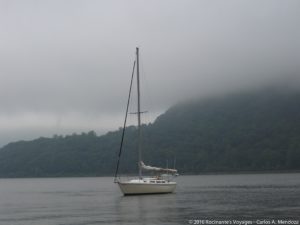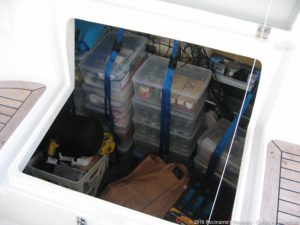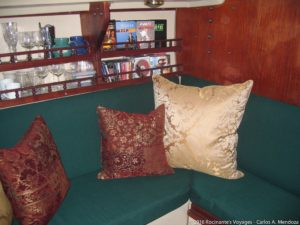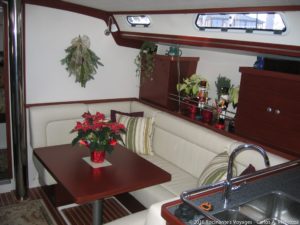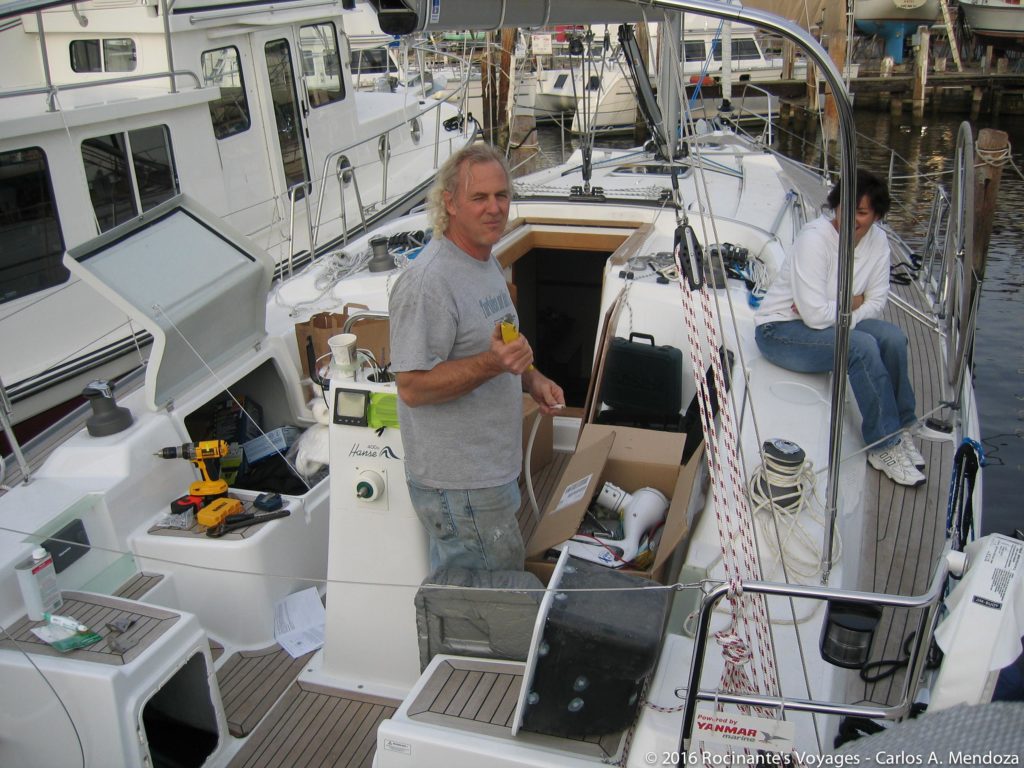It’s an interesting philosophical question, asked often enough, that I can’t help but jump in and try to answer.
Now, sailors, are a passionate bunch and will spend hours on end debating everything from the most mundane to the most esoteric of topics! One such topic is; what makes the best cruising boat? Let me start by stating that I won’t even broach the subject of mono vs multi hull in this particular post. As a matter of fact, rather than argue any particular position, I will simply share how we came to purchase our Hanse 400e.
Let me further clarify my position on some terms thrown around the cruising / live-aboard community. Again, this is my position, I’m not pretending to define these terms for the world, simply for my readers. When it comes to sailors, there are four primary camps; Day Sailors, Racers, Cruisers & Liveaboards; which, as with most attempts to classify people, come in a multitude of flavors!
We’re talking about “Cruising” boats and so when I refer to cruisers, I mean those of us that use our vessels primarily as a means of exploration. Some of us cruisers live aboard our vessels full time and others do not, some of us cross oceans and some of us do not, some of us circumnavigate the globe, some of us do not, but what we all have in common, is that we tend to move about exploring the world (or at least, our chosen section of it) aboard our vessels. Yes, sometimes we daysail and of course, put two people in any kind of apparatus that moves next to each other and you’re guaranteed a race will ensue – even if they don’t admit it!
So, if you’re talking about a “cruising” boat, then you must ensure that it can safely transport you within your “cruising” region. For us, that was Coastal Cruising. Yes, we will cross the ocean(s) but we will spend the bulk of our time cruising along the coast of some continent – the Eastern seaboard (Maine to the Florida Keys) for the next few years, with the occasional foray to the islands then across the pond to explore another continent’s coast and so on.
So with that in mind, let’s look at some of the other factors we considered.
First, we’re a couple that has been married for 38+ years and while we love getting together with other folks, we truly like being by ourselves most of the time – that means that we don’t need 2 heads (toilets) nor do we need 2 additional cabins… one extra cabin for the occasional guest is more than enough.
We prefer to spend the bulk of our time at anchor or on a mooring – so we needed space for plenty/varied ground tackle… We currently have 4 anchors (will be adding a 5th this season) and rode (2 sets of chain and 2 of nylon), snubbers, etc., etc. – that simply means we need plenty of storage and storage that is well distributed so as to not concentrate the weight in any one particular area.
We love to cook, so we actually removed the brand new oven that came with our boat and replaced it with one we felt would better meet our needs. No matter how you slice the question, this is our home, so we redid the upholstery to not only make it look good, but to make it easier to maintain in our wet/sandy/salty environment.
Our first boat had been a Catalina 30, which we loved, and while the fiddle rails along the shelves did an ok job of keeping things in place, we made sure our new boat had cabinets with doors to better protect/control our “things” (glasses, dishes, bottles, clothes, etc.)
No, we do not use plastic – if a glass breaks, we replace it. Like everything else on our boat/home the cabinets serve a purpose, albeit different purposes, for each environment/role.
When serving as our home, it brings a sense of order/neatness to our day-to-day lives (a place for everything and everything in its place). When we head out, it brings control/safety/tranquility to our sailing life – when it gets rough, things don’t fly around the cabin and there is no noise coming up from below causing concern. BTW, yes part of our departure ritual is to pack kitchen towels in with our glassware and put away anything that moves! We’ve found, that for us, it’s a small price to pay for piece of mind.
We added a wind generator and added additional batteries to increase our abilty to be self-sufficient… see that space where the other cabin would have been sure came in handy… who needs pesky guests anyway 😜 Oh yea, and we’ll also be adding solar panels in the near future.
For what it’s worth, the fact that our Hanse is Lloyd’s “A” rated (Ocean) worked it’s way into the equation… Yes, I know it’s simply a rating; open to interpretation; a marketing ploy even! Nevertheless, it was a factor. We obviously knew it was not a “true” bluewater boat, but felt it was at least built to withstand a beating in the right hands. I’m a firm believer that a well maintained and equipped vessel under the command of an experienced crew is more important in determining safety than any particular style/design. I know – sacrilege!
This last point was probably the biggest compromise on home vs boat and might be the crux of the question. While we would be crossing oceans in our Hanse, it would be a very small portion of our time aboard and poor weather during those times would be an even smaller percentage. The narrow beam of a “true” bluewater boat was simply unacceptable as a home. So we chose to give up comfort during those few times for comfort under most sailing/anchoring conditions.
BTW, we have yet to cross an ocean on our Hanse, so only time will tell.
Anyway, the gist of all this rambling is that we made compromises on both fronts to ensure both our safety & comfort, because Rocinante is both our home and our means of exploration!
So, what makes the best cruising boat? The one that meets your particular needs! Contrary to what the magazines tell you, there is no right or wrong answer, but you truly need to ask yourself the hard questions about what you want and what you’re willing to give up to get it!
Till next time,
Carlos & Maria
SV Rocinante…_/)
